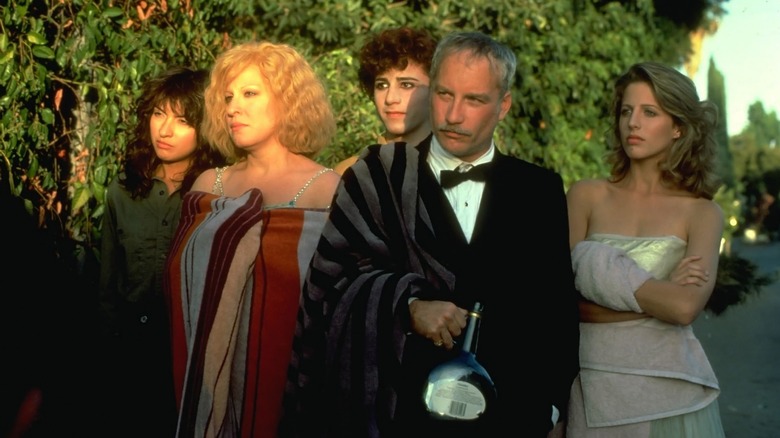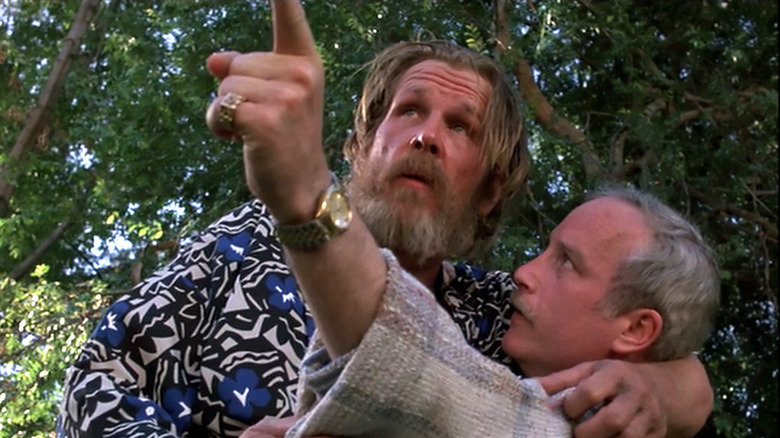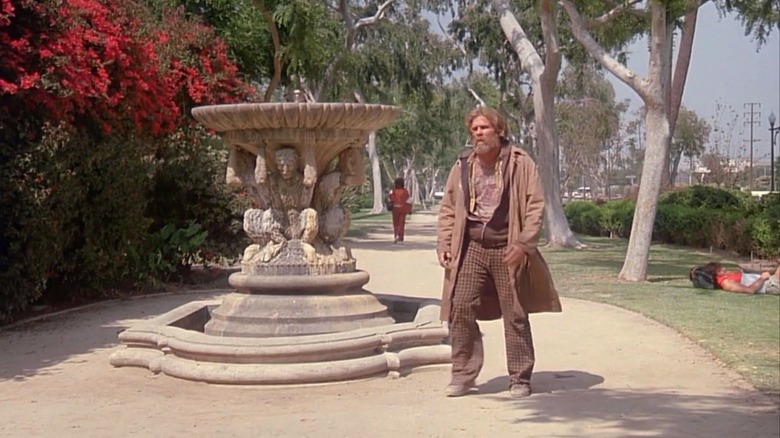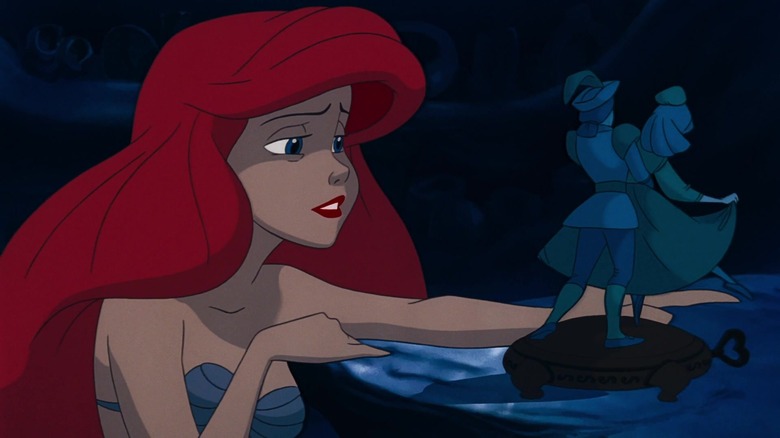Paul Mazursky’s 1986 comedy “Down and Out in Beverly Hills” is a sharp indictment of ultra-moneyed yuppie culture, which was running rampant during the Reagan administration. Culturally speaking, the mid 1980s saw a redoubled effort to enrich the already-wealthy and encourage rich people to become obsessed with conspicuous consumption. Many, many films and TV shows about Beverly Hills were released at this time, delving deep into the cockroach nest where America’s wealthy classes gathered and cannibalized each other.
Prominent among these was Mazursky’s film about a rich family, the Whitemans, that recently became wealthy thanks to a wire hanger manufacturing empire. The family are all empty and unhappy. Matriarch Barbara (Bette Midler) is attempting to fill her emptiness with increasingly strange renditions of New Age spirituality, while patriarch Dave (Richard Dreyfuss) is filling his own emptiness by having an affair with the family’s live-in maid, Carmen (Elizabeth Peña). Their child Max (Evan Richards) is ill-equipped to talk about their gender identity with their parents, and daughter Jenny (Tracy Nelson) may be struggling with an eating disorder.
Into their lives comes Jerry (Nick Nolte), a despondent homeless man who attempts to drown himself in their swimming pool. Dave rescues Jerry, and welcomes him into their household. Jerry’s presence is a force for good in the Whitemans’ lives, and he introduces ideas of non-materialism into their philosophy, causing them to finally free themselves of the prison of wealth.
“Down and Out” was a modern update of the 1919 René Fauchois play “Boudou Saved from Drowning,” itself adapted into a notable 1932 film by Jean Renoir.
A notable piece of trivia about “Down and Out in Beverly Hills”: it was the first R-rated film ever distributed by a Disney company — in this case, Touchstone Pictures.
Disney and the rise of Touchstone Pictures
Disney, as many readers can probably state, has always been very protective of its brand. Ever since the early days, Uncle Walt wanted his studio to project a wholesome, family-friendly tone with its output. Looking over the studio’s offerings from the 1930s through the 1950s, once can see, overall, an idealized, storybook version of the world, free of grit and tragedy. Walt Disney, it seems, didn’t want to challenge viewers with complex, adult stories, but reassure them with easy-to-consume fables.
But the 1980s were a dark time for Disney. It animated features were repeatedly tanking, putting the studio in trouble. In the ’70s, audiences were flocking to darker, more adult dramas, and the whimsical, kid-friendly fare that Disney was known for was falling out of fashion. Also, the era saw the release of expensive flops like “The Black Cauldron,” “The Black Hole,” “Tron,” and many others. There was even talk of shuttering Disney Animation entirely.
Disney was forced to diversify, arranging itself to distribute a wider variety of movies. It was a fascinating time. The company put out horror movies like “Something Wicked This Way Comes” and “The Watcher in the Woods.” Its “nature adventure” films took a dark bent with films like “Never Cry Wolf” and “The Journey of Natty Gann.”
Then, in 1984, Disney created Touchstone Pictures, a separate brand (and not an entity outside of Disney) intended to handle its more “adult” fare. Touchstone became an exploratory opportunity for the studio, and it released sexier, more serious films like “Splash,” “Country,” and “Ruthless People.” It was through Touchstone that “Down and Out in Beverly Hills” was released. Disney was officially in the R-rated game.
Disney had to diversify or die
The Touchstone label was incredibly freeing for a floundering Disney. People weren’t flocking to its animated films — “Oliver and Company” and “The Great Mouse Detective” weren’t drawing the same numbers as their fare from earlier decades — so it could finally, perhaps with lungs full of fresh air, tell more adult stories. The Disney brand, even to this day, is synonymous with “family-friendly,” making Touchstone a blessed way out. Throughout the rest of the ’80s, Touchstone put out movies for grown-ups like “The Color of Money,” “Outrageous Fortune,” and “Stakeout.” In 1987, Touchstone had major hits with “Three Men and a Baby” and “Good Morning, Vietnam.” It also put out gritty crime dramas like “D.O.A.” and Roger Spottiswoode’s “Shoot to Kill.” Yes, even “Cocktail” is a Disney film.
The three lead actors of “Down and Out in Beverly Hills” were staples of the early Touchstone days. Dreyfuss was in “Stakeout” and Barry Levinson’s “Tin Men,” while Midler was in “Ruthless People,” “Outrageous Fortune,” “Beaches,” and the identical twins comedy “Big Business.” Nolte appeared in “Three Fugitives.” It seems that, with its first R-rated movie, Disney found its new stable of stars.
Even kid-friendly films that were a little too “raunchy” for the Disney brand were shunted over to Touchstone. Robert Zemeckis’ amazing “Who Framed Roger Rabbit,” featuring ribald entendres and a film noir plot, was released by Touchstone, as were the silly, sloppy “Ernest” movies.
Disney failed as a family studio, and all of a sudden, it became more interesting. For a few moments, it seemed as if Disney was going to transform into Warner Bros. or Paramount, putting out any kind of films it wanted and freeing itself from Walt’s branding. We would have lost “Disney” as a genre, but gained a great deal more movies.
The Little Mermaid ruined everything
But then, in 1989, “The Little Mermaid” was released to overwhelming success and acclaim, and everything was ruined. As has been previously written in the pages of /Film, Disney was always more artistically interesting when it was suffering financially. Not able to rest on its laurels, Disney had to roll up its sleeves and try weird, wild stuff. It wasn’t always successful, but it was always fascinating for curious audience members.
When the so-called Disney Renaissance began, the studio hit a decade-long stride that brought an explosion of new shows and movies, a grand expansion of its animation, and no small amount of critical acclaim. Disney went back to being the slick, dominant paradigm that other studios had to catch up with, and it enjoyed its wealth and fame. Indeed, it started aggressively elbowing out competition, assuring it would never fall again. To further explore R-rated material, Disney purchased Miramax. Yes, “Pulp Fiction” is a Disney movie.
It’s hard to say where Disney is now. Its biggest hits in recent years have come from either “borrowed” properties it had to purchase from others (Marvel, Star Wars, 20th Century Fox) or with straight-up remakes of its known animated classics. Its streaming services appear to be successful, but it’s difficult to tell when it won’t release its viewership numbers. The company certainly seems more interested in milking known I.P. than trying out daring, weird, edgy material. We’re at a point where Disney is walking the path of least resistance.
I guess that’s a sign everything is fine. We’ll know the company is in trouble again when it tries out weirder stuff again. With a prequel to “The Lion King” on the horizon, that day is still far off.






